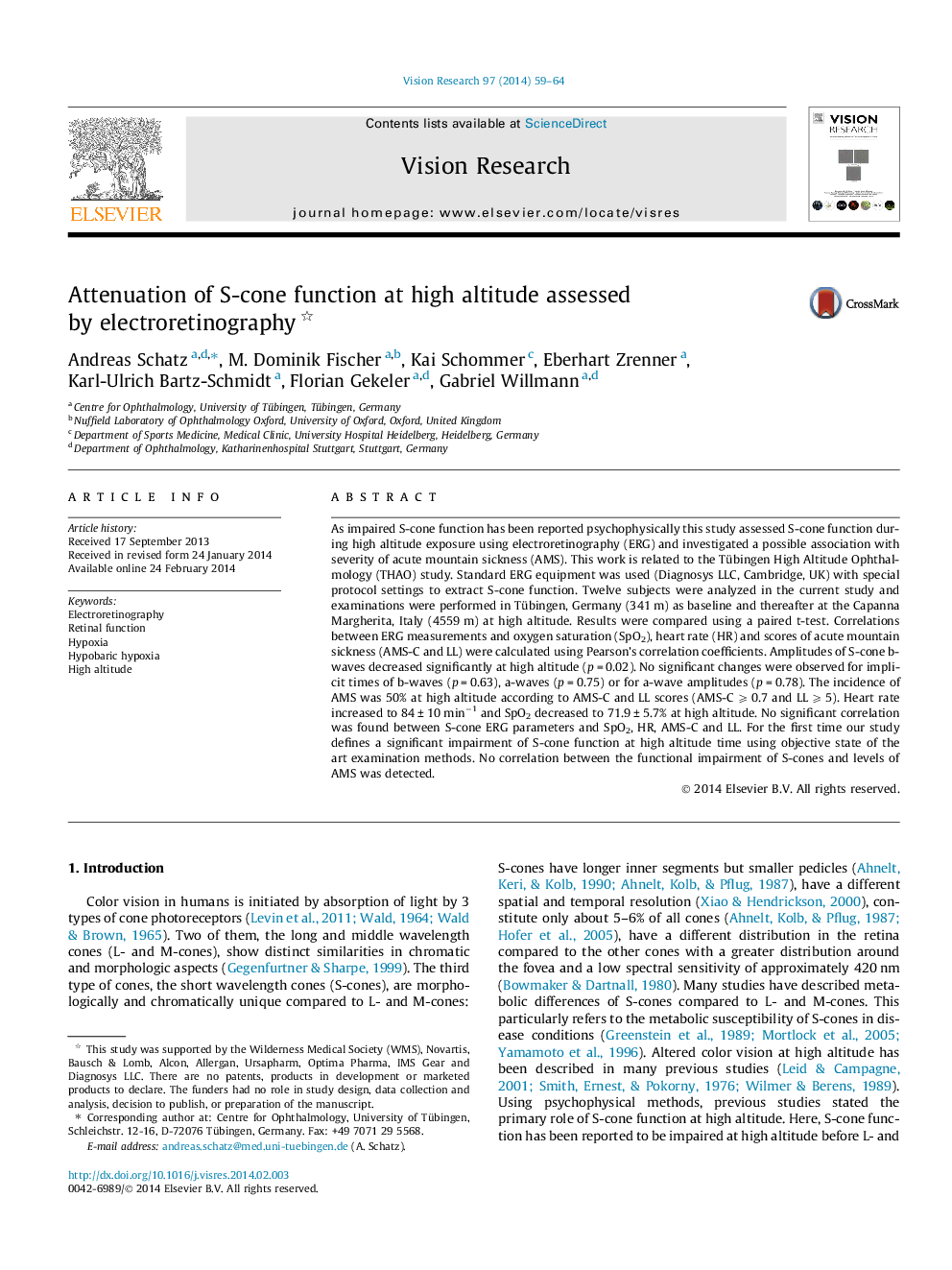| Article ID | Journal | Published Year | Pages | File Type |
|---|---|---|---|---|
| 6203540 | Vision Research | 2014 | 6 Pages |
â¢We examined the impact of high altitude on blue cone function.â¢Blue cone function was examined objectively using electroretinography.â¢At 4559 m an attenuation of blue cone function was observed.â¢Functional impairment was not associated with symptoms of acute mountain sickness.â¢First report of blue cone ERG at high altitude.
As impaired S-cone function has been reported psychophysically this study assessed S-cone function during high altitude exposure using electroretinography (ERG) and investigated a possible association with severity of acute mountain sickness (AMS). This work is related to the Tübingen High Altitude Ophthalmology (THAO) study. Standard ERG equipment was used (Diagnosys LLC, Cambridge, UK) with special protocol settings to extract S-cone function. Twelve subjects were analyzed in the current study and examinations were performed in Tübingen, Germany (341 m) as baseline and thereafter at the Capanna Margherita, Italy (4559 m) at high altitude. Results were compared using a paired t-test. Correlations between ERG measurements and oxygen saturation (SpO2), heart rate (HR) and scores of acute mountain sickness (AMS-C and LL) were calculated using Pearson's correlation coefficients. Amplitudes of S-cone b-waves decreased significantly at high altitude (p = 0.02). No significant changes were observed for implicit times of b-waves (p = 0.63), a-waves (p = 0.75) or for a-wave amplitudes (p = 0.78). The incidence of AMS was 50% at high altitude according to AMS-C and LL scores (AMS-C ⩾ 0.7 and LL ⩾ 5). Heart rate increased to 84 ± 10 minâ1 and SpO2 decreased to 71.9 ± 5.7% at high altitude. No significant correlation was found between S-cone ERG parameters and SpO2, HR, AMS-C and LL. For the first time our study defines a significant impairment of S-cone function at high altitude time using objective state of the art examination methods. No correlation between the functional impairment of S-cones and levels of AMS was detected.
